1. Zither, chess, calligraphy, and painting
In ancient China, playing the zither (古琴, Guqin), the game of go (围棋, Weiqi), calligraphy, and painting (Chinese painting) were skills that literati (including some famous ladies) had to master to cultivate their health and sexuality, collectively called zither, chess, calligraphy, and painting.
The Guqin is one of the oldest plucked instruments in China, Go was pioneered by China, calligraphy is a traditional art unique to China, and ink painting is also unique to China. Therefore, zither, chess, calligraphy, and painting embody the long history and traditional culture of China.
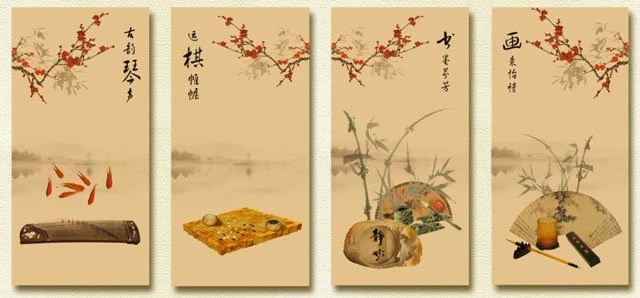
2. Opera
Opera is a traditional Chinese theatrical form with a long history of origins. According to incomplete statistics, there are more than 360 kinds of operas and plays in various ethnic areas in China, with tens of thousands of traditional repertoire. Some of the more popular and famous plays are: Peking Opera, Kunqu, Yue Opera, Qin Opera, Hebei Operas, Anqing Huangmei Opera, Hunan Huagu Opera and so on, especially Peking Opera is the most popular and spread all over the country, not limited by the region.
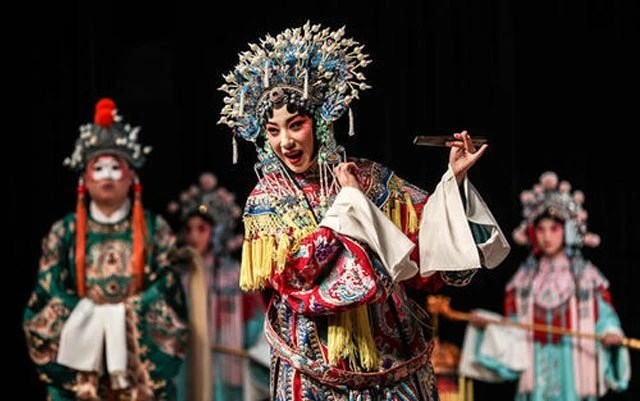
3. Shadow puppetry
Shadow puppetry, which originated in Shaanxi during the Western Han Dynasty, is the world's earliest movable art of dubbing and painting by people. In China, a number of local opera and theater species are derived from shadow play, and the rationale of shadow play, as well as the means of performance art, also played an important role in the invention of modern cinema and the development of modern cinema and art films. It can be seen that the art of shadow has a high artistic value in China and the world.
4. Paper cutting
Paper-cutting is one of the most popular folk traditional decorative arts in China and has a long history. Paper-cutting can be seen all over the country and has even formed different local genres. Paper-cutting not only expresses the aesthetic preferences of the masses, but also implies the deep social psychology of the nation, and is also one of the most characteristic folk arts in China. Folk paper-cutting has a comprehensive, beautifying and auspicious character in its expression, while folk paper-cutting uses its own specific expression language to convey the connotation and essence of traditional culture.
5. Clay sculpture art
The clay sculpture is an ancient and common folk art in China. It is made of clay, hand-knitted into shapes, either vegetarian or colored, with figures and animals as the main characters. The art of clay sculpture dates back to the Neolithic period between 4,000 and 10,000 years ago, and has been found in several prehistoric subsurface archaeological finds. The most famous clay sculptures in China include the "Mud Man Zhang" in Tianjin, the Huishan Mud Man in Wuxi, and the Dunhuang Grottoes. Today, the art of clay sculpture is a concrete reflection of people's quest to return to the basics.
6. Weaving techniques (Chinese knots)
Weaving has a long history in China, as early as the Liao Dynasty, more than a thousand years ago, there were already exquisitely woven household goods. After the Qing dynasty, it is used in various fields of life, and its weaving materials are diverse, including wicker, rattan, sorghum pole, straw, bamboo, rope, metal, etc. In fact, the Chinese knot is a unique folk hand-knotted ornament in China, which started from the ancient ancestors of the knotted rope to remember, is a unique shape, colorful and rich in the connotation of the traditional auspicious ornament.
7. Puppetry
The art of puppetry has a long history of development in our country, and the earliest puppets may be related to the funeral figurines of slave societies. Puppetry is a form of opera in which artists operate puppets to perform stories, and puppetry in China emerged during the Han Dynasty.
Nowadays, there is also a rich variety of puppet shows, which can be summarized as five kinds of performance forms: string puppets, staff puppets, sack puppets, iron-branch puppets, and Yaofa puppets (fireworks puppets).
8. Chinese acrobatics
Around the Neolithic period, Chinese acrobatics had sprouted. The Han Dynasty was the formation and growth period of Chinese acrobatics, and the Han Dynasty Jiao Di opera (角抵戏) quickly enriched the content, increased the variety, improved the skills, and finally in the Eastern Han Dynasty formed a new variety of acrobatic art centered on the gathering of various performing arts together - the "hundred opera" system.
Chinese acrobatics has a strict inward-looking nature, with each technique being passed down from generation to generation. There is also a regional aspect, such as the famous acrobatic town of Wuqiao County, Hebei Province, in northern China. The acrobats respect their teachers and value their skills, and always try every possible means to preserve and pass on the skills passed down by their ancestors.
9. Kite
The kite was invented by the Chinese. It is said that Mo Zhai made a wooden bird out of wood and developed it for three years, which is the earliest origin of kites. Later, his student Lupan used bamboo to improve the material of Mojai's kites, which evolved into the multi-line kites of today.
Today, China's kite flying activities play an important role in foreign cultural exchanges, strengthening friendship with people around the world, and developing the economy and tourism. Weifang, Shandong Province, holds a kite festival every year.
10. Dragon and lion dance
Dragon and lion dance is an excellent folk art in China. Every time during the New Year's Eve festival or gathering celebrations, folk come to cheer with dragon and lion dance. This custom originated during the Three Kingdoms period and became popular during the Northern and Southern Dynasties, and has been around for over a thousand years. 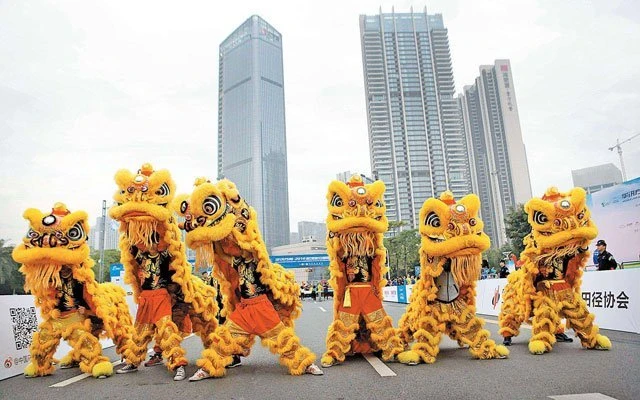
The above ten Chinese folk arts are the most precious artistic treasures in Chinese traditional culture. Under the generational inheritance of the Chinese people, a new light is constantly shining.


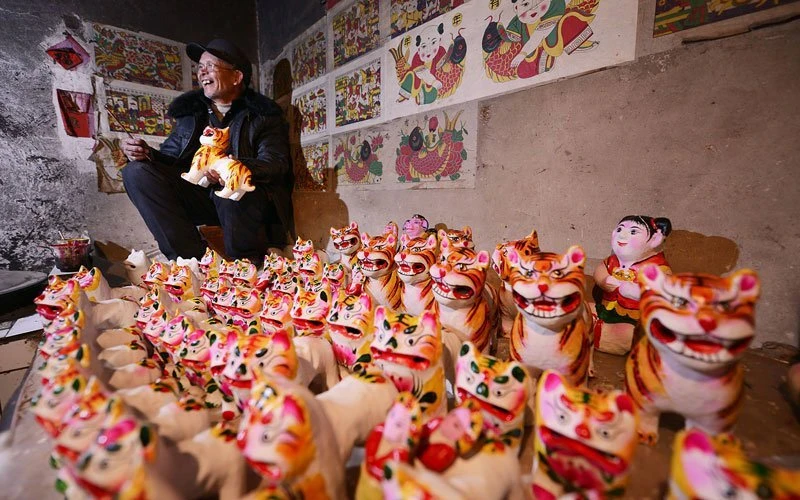
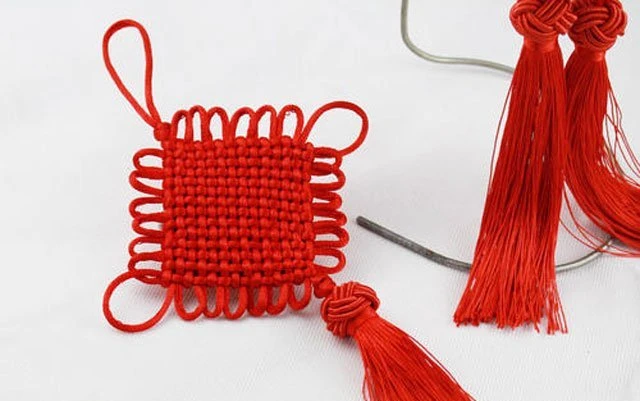


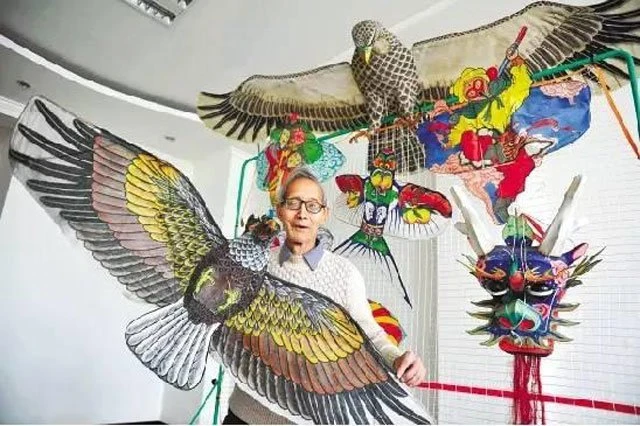

I love learning about the culture. 🙂
Kalau diindonesia juga ada seni wayang, yaitu wayang golek, wayang kulit dan Wayang wong (orang}
Mirip pewayangan